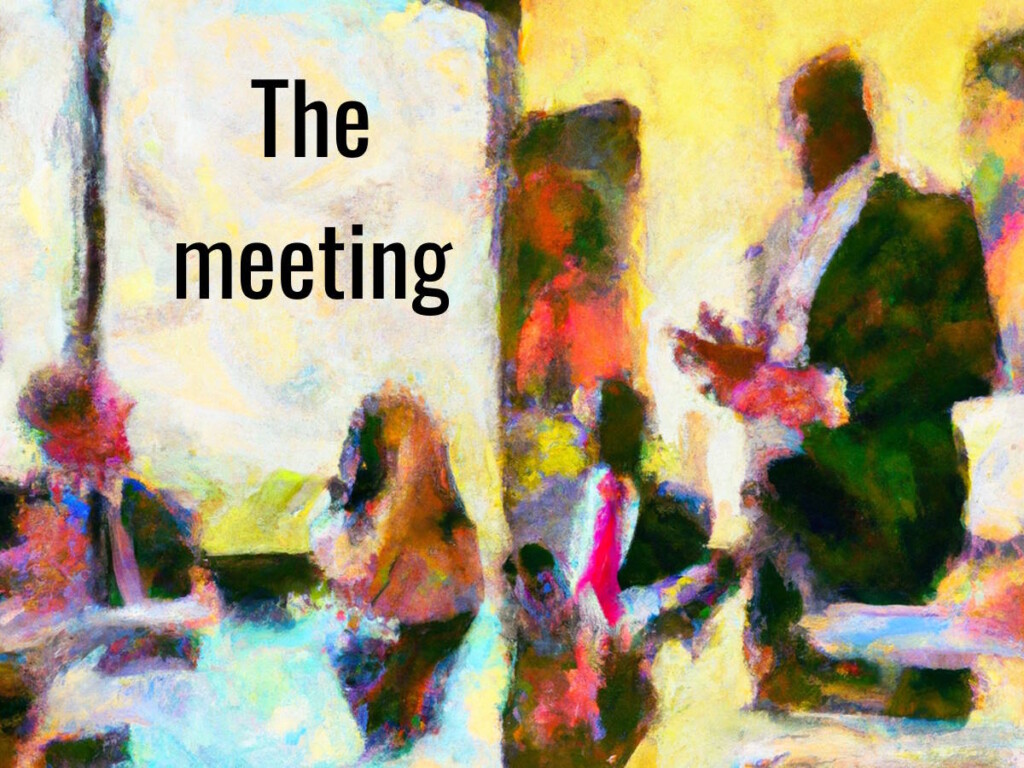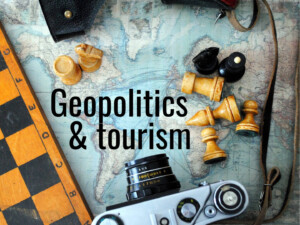The heads of finance, operations, and public relations walk into their boss’s office …

The heads of finance, operations, and public relations walk into their boss’s office …
It might be the setup for a joke — feel free to suggest a punchline — but it could pertain to a very serious matter.
What is the most important issue that they could talk about? And how might they come to an agreement?
Your correspondent put this hypothetical to a range of travel & tourism stakeholders — “GT” Insight authors, “GT” Partners, and their invitees — and invited emailed written responses of no more than 300 words.
I also put it to Chat GPT, adding that it was in the context of the tourism industry.
Click/touch a name to go to their answer:
- K Michael Haywood — The post-retreat meeting
- Shamiso Nyajeka — The missing chair
- ChatGPT — ‘There’s no vacation from a crisis in the travel industry’
- What do you think?
Previous “GT” Insight Bites:
- Yes, Tourism Minister
- What are tourism’s biggest challenges & threats over the next five years?
- ‘Tourism is built on the backbone of white supremacy’. What do you think?
- Really, what’s the difference? ‘Sustainable tourism’ vs ‘regenerative tourism’
- Want a career in tourism? Important things you should know
- Diverse perspectives on travel & tourism and a fairer world
- Diverse perspectives on economic degrowth and tourism
- Diverse perspectives on visitor dispersion
The post-retreat meeting
K Michael Haywood, Professor Emeritus, University of Guelph, Canada
The heads of finance, operations, and public relations walked into my office yesterday unannounced. They appeared out-of-sorts.
I had my suspicions as to what might be amiss: The senior management retreat, discussing strategic change necessary to pre-empt the future, had frayed nerves.
As expected, each of the VPs unloaded a litany of concerns.
Not about our responses to climate change or being ESG compliant, nor about the necessity of DEI, and commitments to community shared value.
No, their frustrations revolved around managing dual strategies: The CEO’s (my) attempt to pre-empt the future, versus the VPs’ struggle to master the present.
As a major international corporation with properties in 35 countries, and still expanding, we are emerging intact after a long and very tiresome struggle with COVID lockdowns and diminished travel.
But now, with margins and profits stabilising, frustrations around regaining resilience and operational stability is boiling over.
Understandably, the VPs are frustrated.
They have no clarity as to how organisational change will be manifest, activities redefined, and essential new capabilities built.
Moreover, I am unsure as to how to communicate ideas and change throughout the company, from the VPs to regional and local managers.
As I reflect on how to respond, I know we have to:
- Keep the “change project” on everyone’s agenda;
- Communicate strategy in clear, concise, operational, and actionable terms;
- Ensure collaboration and coherence of action;
- Create coherence of action through consensus;
- Give people the power to act; and
- Guide the formulation of operational plans.
For the Board, I have to explain our new stakeholder management approach; how strategies to derive net-positive impact will create meaningful value for everyone, including shareholders, communities, employees, and customers.
That’s my job.
The missing chair
Shamiso Nyajeka, Head of Tourism Management, Kirirom Institute of Technology, Cambodia
It is a typical meeting of the top brass. Over the next two hours, the quartet will ‘chart the way forward’ for the district’s development.
The agenda focuses on managing community resources and the interventions of NGOs involved in various developmental projects. Of note is the funding and implementation of a training project to enhance the sustainability of villagers’ small handicraft businesses. Many households thrive on selling handicrafts to travellers drawn to the serenity of this rural community.
The agenda appears noble as it dwells on projects that will improve rural community livelihoods. They are projects that will contribute to sustainable development, save for one subtle flaw; planning for and not with the community.
For example, planning for the training project did not involve the villagers.
The district administrator initiated the project based on what he thought would help the locals, while experts designed and planned the training.
It is highly likely that the training will be insightful. However, there is no guarantee that it will address community needs.
It has become well-recognised that involving local communities is essential for sustainable development. Yet, in many parts of rural southern Africa, full community participation, from planning to implementation, and evaluation is yet to be achieved. Politics, tribalism, and other social conflicts do not help the situation.
Several countries in the region acknowledge the value of the community and have provided for it in their statutes. However, not even the legislature could convince the four executives to create an extra seat at the table.
Perhaps a reorientation towards Ubuntu will influence the powers-that-be to engage the community.
‘There’s no vacation from a crisis in the travel industry’
ChatGPT Jan 30 Version
[The department heads and their boss] could be discussing a potential crisis that could negatively impact the company’s reputation and financial stability.

This could be anything from a natural disaster affecting one of their destinations, to a public health scare that affects travel plans, to negative media attention.
The head of finance would present the potential financial impact of the crisis, including any losses or costs associated with managing the crisis.
The head of operations would discuss the logistics of responding to the crisis, such as evacuating guests or cancelling bookings, and the impact on current operations.
The head of public relations would outline the plan for communicating with stakeholders and the public, as well as managing the company’s reputation during and after the crisis.
To come to an agreement, the group would need to prioritise the safety and well-being of their guests, employees, and partners.
They would also need to consider the potential long-term effects on the company’s reputation and financial stability.
They may reach out to outside experts, such as crisis management consultants, for advice and guidance.
To ensure a unified response, the group would also need to establish clear lines of communication and decision-making processes.
This could include regular check-ins with stakeholders, regular updates to the public, and a crisis response team in place to manage the situation.
A good punchline in this scenario could be: “Looks like they’re all in this together, because there’s no vacation from a crisis in the travel industry!”
By working together, the heads of finance, operations, and public relations can help mitigate the impact of a crisis and ensure the success and stability of the company in the long run.
What do you think?
What do you think? Share your own thoughts in a comment below. Or write a deeper “GT” Insight. The “Good Tourism” Blog welcomes diversity of opinion and perspective about travel & tourism, because travel & tourism is everyone’s business.
Featured image (top of post): A DALL‑E-generated “impressionist painting of a business meeting in a boss’s office”.







